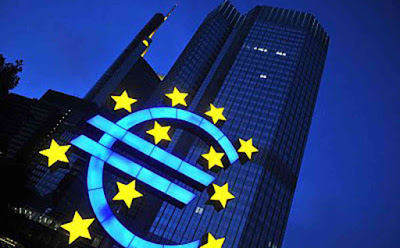Economy
In the week ahead, market players will be turning their attention to a highly anticipated speech by Federal Reserve Chair Janet Yellen for fresh clues on the timing of the next U.S. rate hike.
In addition, investors will continue to focus on U.S. economic reports to gauge if the world's largest economy is strong enough to withstand a rate hike in the coming months, with Friday’s revised second quarter growth data in the spotlight.
Meanwhile, market participants will be looking ahead to a second reading on U.K. growth data for further indications on how business investment and consumer spending performed in the run-up to the Brexit vote.
Traders will also be looking to Tuesday’s survey data on euro zone business activity for fresh signals on the health of the region's economy in wake of Britain's vote to exit the European Union earlier in the summer.
Elsewhere, Japanese inflation data will also be in focus as investors assess the need for further stimulus in the world's third's largest economy.
Ahead of the coming week, Investing.com has compiled a list of the five biggest events on the economic calendar that are most likely to affect the markets.
1. Yellen speaks at Jackson Hole
Investors are looking ahead to this week's annual meeting of top central bankers and economists in Jackson Hole, Wyoming, due to take place from Thursday to Saturday.
The highlight will be when Fed Chair Yellen takes the stage on Friday. Speculation is rife that she will use the speech to start the race for a rate hike as soon as September following a recent barrage of hawkish Fed speakers.
The annual Fed symposium has sometimes been used by Fed chairs to make important policy pronouncements.
According to Investing.com's Fed Rate Monitor Tool, investors are pricing in just a 12% chance of a rate hike by September. December odds were at around 46%.
2. Revised U.S. second quarter growth
The U.S. is to release revised figures on second quarter economic growth at 8:30AM ET (12:30GMT) Friday. The data is expected to show that the economy expanded by 1.1% in the April-June period, downwardly revised from a preliminary estimate of 1.2%.
Besides the GDP report, the U.S. is to produce data on new home sales, existing home sales, durable goods orders, weekly jobless claims and revised consumer sentiment numbers.
3. U.K. Q2 GDP - second estimate
The Office for National Statistics is to produce a second estimate on U.K. economic growthfor the April-to-June quarter at 08:30GMT (4:30AM ET) on Friday. The report is forecast to confirm the economy grew 0.6% in the three months ended June 30, unchanged from a preliminary reading.
However, the bigger question is about third quarter, post-Brexit, growth prospects.
4. Flash euro zone PMIs for August
The euro zone is to publish preliminary data on manufacturing and service sector activity for August at 08:00GMT (4:00AM ET) on Tuesday, amid expectations for a modest decline.
Ahead of the euro zone PMI's, France and Germany will release their own PMI reports at 07:00GMT and 07:30GMT respectively.
Meanwhile, a report on August German business sentiment will also be in focus, with the Ifo research institute slated to release its findings at 08:00GMT (4:00AM ET) on Thursday.
5. July Japanese inflation data
Japan's Statistics Bureau will publish July inflation figures at 23:30GMT Thursday (7:30PM ET). Market analysts expect the headline figure to remain negative, falling 0.4% year-on-year, which would be the eighth straight month of declines.
The country has been struggling to hit its 2% consumer price target, maintaining pressure on policymakers to support the world's third largest economy.
Source by Investing.com









